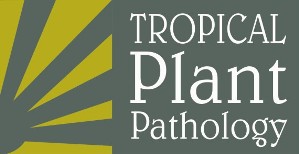The effect of acibenzolar-S-methyl (ASM) and the rhizobacterium isolate L2-1 (Bacillus cereus), applied either alone or in combination, was evaluated in cotton plants for resistance induction against Xanthomonas axonopodis pv. malvacearum. Bacterial blight severity, lignin content and the activities of phenylalanine ammonia-lyase (PAL), peroxidase (POX) and beta-1.3 glucanase (GLU) were assessed at different time courses. ASM and L2-1, used alone or in combination, significantly reduced disease severity, while ASM alone was the best treatment for bacterial blight control. No synergistic effect was observed when ASM was associated to isolate L2-1. ASM induced the highest increases in the activities of PAL, POX and GLU as well as lignin deposition, mainly 14 days after treatment application. When ASM and the rhizobacterium were simultaneously applied, enzyme activities were always lower, compared to ASM alone.
Gossypium hirsutum; Xanthomonas axonopodis pv. malvacearum; induced resistance





